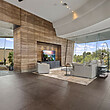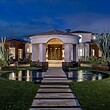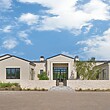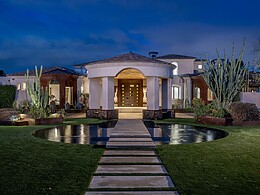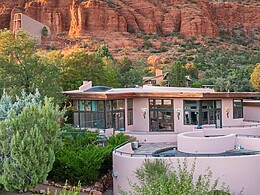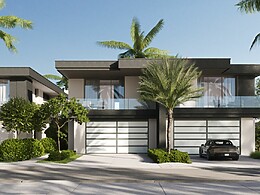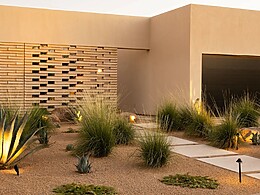Biophilic design might sound like a fancy buzzword, but at its core, it’s simple: it’s about reconnecting with nature in the spaces where we spend time: at home, in the office, or in the lobby of your favorite coffee shop. This design brings natural elements indoors to support our mental, physical, and emotional well-being.
It’s not just about adding a few plants in the corner. It’s more intentional; working with natural light, incorporating organic textures like wood and stone, adding greenery in ways that feel immersive, and even using shapes and patterns that mimic nature. It’s designing with nature in mind, not just decorating with it.

Plant Solutions is a Scottsdale-based company that’s been bringing nature into buildings for over 40 years. Founded by Joe Zazzera, one of the pioneers in the biophilic design movement, the company specializes in living walls, moss art, and interior plantscapes that are beautiful and meaningful.
“Our work lives in corporate offices, hospitals, restaurants, hotels, and homes, and everything we do is rooted in the belief that nature belongs everywhere people are,” Account Manager Keeli MaKae said. “We design with intention, grounded in science and art, to create spaces that restore, inspire, and connect.”
MaKae is a Biophilic Design Certified Practitioner with a lifelong passion for plants and a background in horticulture and design. Her responsibilities include helping clients create intentional spaces that restore well-being, reduce stress, and foster meaningful connections to nature. Whether it’s a corporate office, boutique hotel, restaurant, or private residence, her work reflects the belief that thoughtfully designed, nature-inspired spaces don’t just look beautiful, they help people feel grounded, balanced, and at home.

Why Biophilia is Everywhere Right Now
This design approach has gained a ton of momentum over the past few years. People are spending more time indoors than ever before, and it’s taking a toll. We’re feeling burnt out, overstimulated, and disconnected.
“Bringing nature inside offers a really tangible way to shift that. There have been studies about this, too,” MaKae said. “Spaces designed with biophilic elements can reduce stress, improve mood, boost focus, and even help people recover from fatigue faster. A lot of folks are rethinking how their spaces feel. It’s no longer just about what looks trendy, it’s about what feels grounding, soothing, and alive.”
Studies show that even brief contact with nature can lower stress hormones, boost focus, and improve overall well-being. But honestly? We don’t need a study to tell us that sunlight feels better than blue light, or that hearing birdsong out a window is more calming than a Slack notification.
In my work, I’ve seen clients’ faces soften as we bring more nature into their space. I’ve seen employees stay longer in break rooms that feel warm and alive. I’ve seen restaurant owners finally take a breath when their space starts to breathe too.

What People Are Asking For
Clients of Plant Solutions are usually craving calm, beauty, and a sense of connection. Some of the most popular requests are:
•Living walls and moss art: These are popular because they bring texture and color without taking up space. These are the statement makers.
•Maximizing natural light: This could mean arranging furniture around windows or choosing sheer curtains to let the sun pour in.
•Low-maintenance plants: People want greenery that thrives in Arizona; think desert-adapted species, preserved moss, or even artificial options that still give the visual benefit.
•Natural materials: Warm woods, raw edges, and finishes that feel organic.
•Healthier environments: Air-purifying plants, nature-inspired color palettes, and layout choices that make a space feel more open and breathable.
At the end of the day, biophilic design is a return to something ancient and instinctual: our need to feel connected to the world around us.
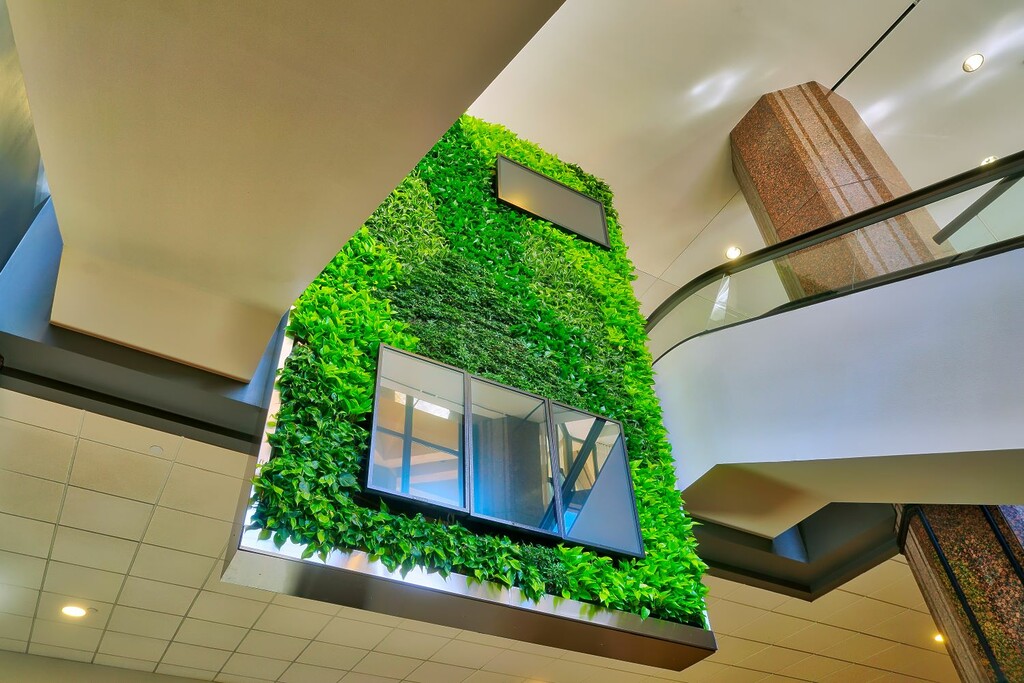
Why Biophilic Design Is Really About Well-Being
Beyond the Instagrammable greenery and cool-looking living walls, biophilic design is really about something much deeper: our well-being.
“At its heart, biophilic design is based on a simple truth: we feel better when natural elements surround us. Think about how your mood shifts when you take a walk outside, open a window for fresh air, or catch a glimpse of a tree through your office window,” MaKae said. “Biophilic design brings those same benefits inside in intentional, sustainable ways.”
Stress reduction: Greenery, natural light, and views of nature have all been shown to lower cortisol and heart rate. People are craving spaces that help them breathe easier.
Improved focus and productivity: In both office and work-from-home settings, nature-based design can enhance attention and reduce mental fatigue.
Connection and calm: Biophilic elements help people feel more grounded and present, whether they’re walking into a hotel lobby or winding down at home.
Healthier spaces: From air-purifying plants to materials that don’t off-gas, clients are paying more attention to what’s in their environment – and how it impacts their health.
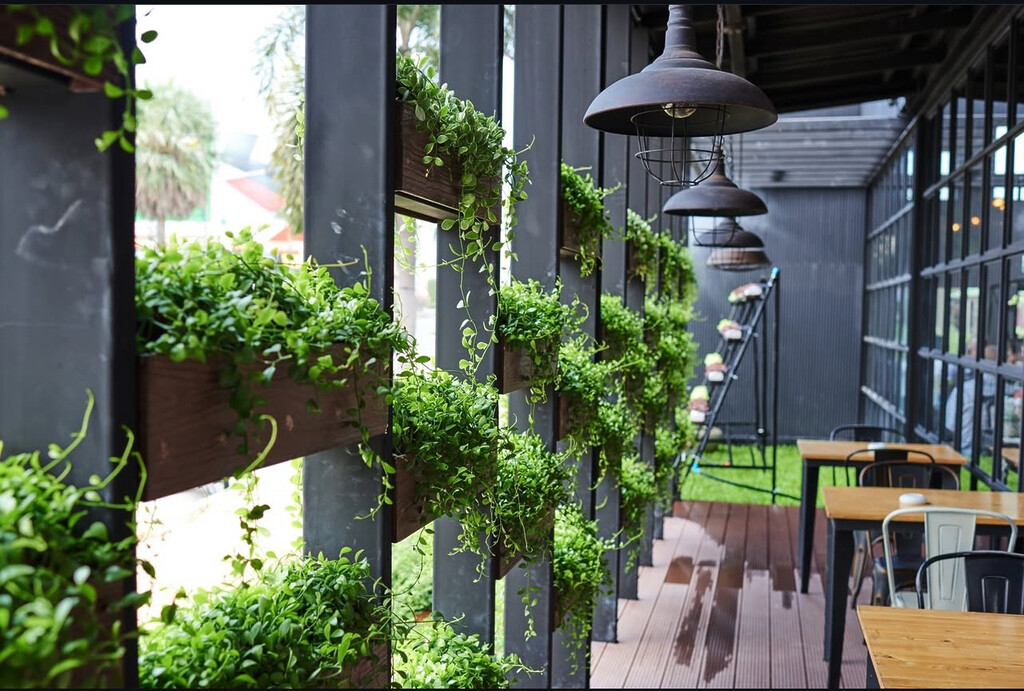
It’s Not a Luxury – It’s a Need
We weren’t built to live in concrete boxes under fluorescent lights. But modern life keeps most of us indoors for 90 percent of our day, especially in Arizona during the summer months. That disconnect takes a toll on our focus, stress levels, and even our sleep. Biophilic design helps bridge that gap.
“Whether they realize it, many clients come to us seeking calm, comfort, and a sense of groundedness. They want their spaces to feel good, not just look good,” MaKae said.
Surrounding yourself with living plants is a start, but also consider better airflow, more natural light, earthy textures, and spaces that invite pause.

Designing for Real Life
In Phoenix, we might not have lush forests outside our windows, but we can still create meaningful connections to nature indoors, whether it’s through desert-adapted plant palettes, preserved moss art, or natural textures and patterns that evoke the outdoors.
Biophilic design isn’t about being trendy or adding greenery to check a box. It’s about creating environments that support how we feel, function, and heal. And in a world that moves fast and asks a lot of us, that kind of support matters more than ever.
“A few weeks ago, I walked into a room and instantly felt my shoulders drop. It wasn’t fancy or over-designed – it just felt… good. There was light filtering through sheer curtains, the quiet rustle of a plant’s leaves brushing the wall, and a soft scent of something earthy in the air,” MaKae said. “It reminded me of being outside after a storm. Safe. Present. Still.”

That moment stuck with MaKae. More often, we’re racing through beige offices, fluorescent grocery aisles, or homes that were decorated to impress, but not to soothe. And yet we spend the majority of our time indoors. That’s where biophilic design comes in. Biophilic design is the practice of designing with nature in mind, so that your environment supports how you feel, function, and heal.
You don’t have to change everything overnight. Maybe it starts with one corner of your space that makes you breathe a little easier. Perhaps it’s a shift in how you think about “good design,” not as something to impress others, but as something that truly nourishes you. And if you need some ideas, Plant Solutions is here to help. Learn more at plantsolutions.com.


